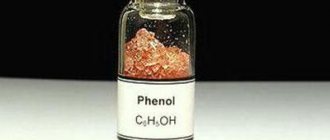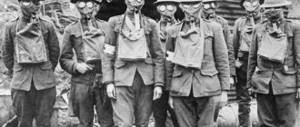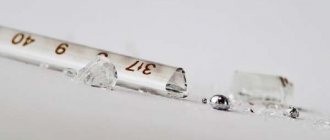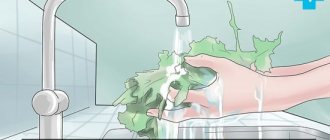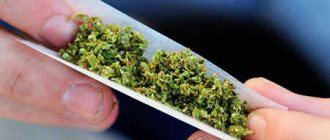Morphine opiates belong to the class of anesthetic medications and are widely used by doctors to relieve chronic, acute and other types of pain. Currently, technologies have been developed for taking opiates in any convenient way (orally, injections, droppers, etc.)
Opiates are extracted from a special variety of plants – the opium poppy. The substance itself belongs to the group of natural alkaloids. All opium painkillers are based on morphine and codeine.
At the same time, the term opiates is also used to refer to a variety of drugs that can interact with opium receptors in the body and have similar effects.
The action of opiates is directed towards the central nervous system. An increased dose that can cause intoxication varies widely and depends on the individual characteristics of a particular individual. The degree of toxicity is also determined by the method of taking the drug and the body’s tolerance to such substances. Since there is no data on exactly how much of an opiate constitutes an overdose, cases of intoxication with these substances are not uncommon.
Today, medicine widely uses not only natural alkaloids. Derivatives of morphine and codeine, semi-synthesized at the molecular level, are also widespread.
The effect of opiate drugs on the human body
Among opium addicts, the first phase of the action of opium is called the “coming on” and begins within 20-30 seconds. after reception.
At the physiological level, the following happens:
- An increase in heat in the abdominal cavity and lumbar region, which gradually rises up throughout the body,
- Redness of the facial skin,
- Constricted, motionless pupils,
- Thirst, feeling of dry mouth,
- Itching in the lower part of the face.
On a psycho-emotional level:
- A person feels as if he has “seen the light”, “seen the essence of all things”,
- The surrounding world is refracted and seems ideal, “sparkling”,
- Lack of thoughts, state of meditation, bliss in the head,
- Consciousness perceives only the “high” of physical sensations.
The first phase lasts about 5 minutes. With long-term use of opiates, the body's tolerance to them increases, and therefore the time of the first phase is reduced.
The second phase in the relevant areas is usually called “nirvana”. The addict experiences a state of bliss and languor, true bliss and joyful peace. Physiologically, he seems to freeze, his limbs become heavy. A person stops paying attention to surrounding objects and events or reacts inappropriately. In the imagination, “unearthly fantasies”, dreams and reveries are replaced one after another.
Codeine's action is somewhat different from morphine in the second phase: when it is taken, psychological and motor hyperactivity occurs, speech is fast but incoherent, thoughts are confused.
The second phase lasts on average about 3-4 hours.
The third phase is a phase of very sensitive sleep, which can be disturbed by even the slightest rustles and sounds. It also lasts about 3-4 hours.
Phase 4 does not occur in everyone and depends on the individual characteristics of the body. It is characterized by headaches and a state of increased anxiety, melancholy; attacks of vomiting and tremors may occur.
In general, including all phases, the effect of opium lasts 6-10 hours.
Classification of drugs
In narcology, it is customary to divide narcotic drugs into the following categories:
- opiates of natural origin (morphine, codeine, omnopon), semi-synthetic (heroin) and synthetic (medintyl);
- hemp-based substances (marijuana and hashish);
- cocaine and crack;
- non-amphetamines and amphetamine itself;
- hallucinogenic factors – natural and synthetic.
- pharmacological drugs.
Symptoms of narcotic poisoning
Signs of opiate poisoning and first aid
Addiction to injection drugs usually develops after 1-2 months . An overdose of opiates is accompanied by the following clinical picture:
- miosis – persistent constriction of the pupils;
- pale and dry skin;
- a sharp decrease in body temperature below 36 degrees;
- itching and burning of the facial skin;
- dysarthria (disorder of speaking function);
- attacks of ataxia or incoordination;
- partial or complete hypoesthesia (impaired surface sensitivity);
- changes in heart rate and irregular breathing movements.
Opiate poisoning in a patient primarily causes respiratory depression . Therefore, such people often need emergency medical care:
- lay the patient down, turn his head to the side;
- ensure a free flow of fresh air and free the chest and neck from clothing;
- if the victim is conscious, rinse the stomach with a weak saline solution;
- give the patient sorbents to remove toxic products from the body;
- In case of sudden loss of consciousness, bring a cotton swab moistened with ammonia to your nose.
The development of life-threatening conditions requires emergency resuscitation measures in the form of external cardiac massage and artificial respiration.
Symptoms of cocaine poisoning
Drugs in this group have a pronounced analgesic effect . However, they do not affect the respiratory center located in the tissues of the brain. Poisoning with drugs of this group is accompanied by the following symptomatic manifestations:
- persistent mydriasis (dilated pupils);
- general weakness and malaise;
- tachycardia (progressive increase in heart rate);
- dizziness and disorientation in space and time;
- increasing shortness of breath at rest;
- visual and auditory hallucinations;
- increase in body temperature and blood pressure.
Often patients in this condition pose a danger to others . In this regard, after detecting symptoms of cocaine poisoning in a person, the following actions should be taken:
- call an emergency medical team;
- induce artificial vomiting;
- place the patient on one side to prevent aspiration of vomit;
Further treatment of cocaine intoxication is carried out in the intensive care unit.
Symptoms of marijuana and hashish poisoning
A characteristic feature of such a lesion is periodic changes in mood . Marijuana has a sedative and stimulating effect on the body. Drug poisoning is accompanied by signs of intoxication:
- emotional instability;
- progressive tachycardia;
- acute attack of hypertension;
- constant feeling of dry mouth;
- pupil dilation.
Specific treatment for such patients consists of gastric lavage with saline solutions, the use of enterosorbents, forced diuresis (internal administration of diuretics) and drinking large amounts of fluid.
Symptoms of poisoning with hallucinogenic drugs
This group of drugs includes tablets (LSD) and plant products in the form of seeds and mushrooms. Poisoning with LSD and other narcotic substances in this case is characterized by intoxication, which can begin with a feeling of slight discomfort and diarrhea, and end with acute respiratory failure, suffocation and death . These patients experience the following symptoms:
- significant increase in heart rate;
- gradual increase in blood pressure indicators;
- dilated pupils or mydriasis;
- intense trembling of the upper extremities (hand tremor);
- euphoric state;
- a sharp violation of spatial orientation;
- increased frequency of visual and auditory hallucinations;
- incoordination of movement.
Symptoms of intoxication with psychostimulants
These pharmacological drugs are actively used in psychotherapy to stimulate a person’s mental and physical activity. Increasing their dosage leads to toxic poisoning. At the first stage, the symptoms of drug intoxication are as follows:
- attacks of nausea and vomiting;
- persistent headache;
- acute diarrhea.
Subsequently, the patient’s general health deteriorates, he loses consciousness, body temperature and blood pressure decrease . In some cases, the patient experiences convulsions. A person with such symptoms is subject to emergency hospitalization and resuscitation measures.
Manifestations and consequences of poisoning with sleeping pills
These pharmaceuticals promote rapid onset of sleep. Their overdose is often fatal . Narcotic intoxication with hypnotics includes the following symptoms:
- gradual depression of the function of the central nervous system, which leads to coma;
- reduction in the number of breathing movements;
- Initially, the pupils narrow, and then they dilate due to oxygen starvation;
- acute renal failure.
Signs of poisoning by external toxic substances
Substance abuse is considered a type of drug addiction. The only difference between these diseases is the use of gasoline, glue and acetone by substance abusers. In such cases, there is a high probability of addiction to the effects of such substances. Drug poisoning requires gradual weaning of the body , since abrupt withdrawal of drug intake causes withdrawal syndrome.
Signs of such poisoning:
- tremor of the upper and lower extremities;
- progressive insomnia;
- unmotivated irritability;
- attacks of intense headache;
- nausea and vomiting.
Main clinical signs
The first signs of drug poisoning with analgesics appear in the form of several characteristic or basic reactions.
The main manifestations do not depend on how the drug entered the body:
- narrowing of the pupil of the eye to a minimum size, the so-called “pinhead”, “poppy seed”, “pinpoint pupil” (miosis);
- sudden depression of consciousness, which can develop into a superficial and then a deep coma;
- intermittent, shallow, rare breathing, which then becomes more frequent, which may result in respiratory arrest;
- cyanosis (cyanosis) of the skin of the face and limbs;
- symptoms of oxygen starvation of brain cells, hypoxia;
- toxic encephalopathy (impaired brain function as a result of poisoning).
With miosis, the diameter of the pupil sharply narrows
Coma due to drug poisoning can result in death.
Other signs
In addition to the main symptoms, intoxication can also manifest itself with other signs.
They are not the main and defining ones, but often develop against the background of regular abuse or accidental poisoning:
- constriction of the pupil (miosis) is replaced by maximum or moderate dilation (mydriasis);
The constriction of the pupil is replaced by its dilation.
- toxic cerebral edema develops with corresponding symptoms (loss of consciousness, convulsions, coma);
- maximum expansion (dilatation) of venous vessels, as a result – the development of acute heart failure;
- symptoms of oxygen starvation of the heart muscle, sudden cardiac arrest;
- against the background of pulmonary insufficiency and pulmonary edema, pneumonia and pneumonitis develop;
- signs of positional compression of soft tissues (forced positions during complete “blackout” lead to impaired blood supply to soft tissues, the appearance of extensive bruises, hematomas, and internal hemorrhages);
- in an unconscious state, the gag reflex remains, the result can be death from vomit entering the respiratory tract;
- convulsions appear;
- body temperature can drop sharply, to general hypothermia;
- increased temperature, redness, pain in certain parts of the body (usually at injection sites, so-called pyrogenic reactions).
Against the background of general intoxication, there is a delay in urination and defecation.
Please note: constriction of the pupil is a leading sign of drug poisoning.
In the video in this article: symptoms of drug overdose.
Complications
Intentional or accidental drug poisoning is fraught with the development of complications:
- disorders of the brain caused by focal lesions;
- damage to areas of the spinal cord (complete and partial paralysis, paresis);
- polyneuropathy (muscle weakness, circulatory disorders);
- mental disorders and various affective reactions;
- development of renal and pulmonary failure.
Chronic drug abuse leads to the development of various complications.
Pathogenesis of the development of drug intoxication
The progression of drug poisoning is influenced by the following factors:
- Cumulative, in which the amount of toxic substance taken exceeds the maximum permissible concentration for the body.
- Temporary. This factor characterizes the rate at which the toxin enters and is eliminated from the body. In this case, the poisoning of the body goes through three successive stages:
- primary toxic damage to the nervous system;
- stage of advanced clinical symptoms. At this time, dysfunction of the muscular, respiratory, nervous and digestive systems occurs;
- removal of the drug from the body and deposition of toxic substances in the internal organs.
- Spatial. The severity of intoxication directly depends on the method of drug administration.
- Age. The most resistant category of patients to the effects of narcotic drugs are middle-aged people . The most severe consequences of poisoning are observed in children and the elderly.
- Medicinal. The severity of symptoms depends on the complex of medical measures to eliminate the consequences of toxic poisoning.
Sequence of treatment measures
In a medical institution, a patient in a state of drug poisoning is given the following complex of treatment:
- Carrying out full ventilation of the lungs.
- Antidote treatment. Antidotes are selected individually for each clinical case . They are able to neutralize specific types of drugs.
- Blood pressure is reduced by intravenous administration of adrenergic agonists.
- Removing toxic products by gastric lavage or artificially increasing diuresis.
- Dehydration of the body with drugs such as mannitol and Lasix.
- Alkalinization of the circulatory system with a 3% solution of sodium bicarbonate.
- Activation of metabolic processes in the tissues of the central nervous system (piracetam, Actovegin).
- Preventing complications with antibiotics.
First aid for drug poisoning in severe cases requires resuscitation measures and subsequent transportation to a specialized medical clinic.
Why does opiate poisoning develop?
Systematic use of surfactants causes addiction, against the background of which there is a gradual decrease in the depth of euphoria. To achieve the expected effects, the addict tends to increase the dose. In pursuit of a “high,” sooner or later, almost all patients experience an overdose - taking an inappropriately large amount of a psychoactive substance. A situation of intoxication can also be provoked by taking a regular “portion” after an unsuccessful attempt to quit the drug. This problem occurs at the height of withdrawal – withdrawal syndrome.
One of the unusual cases of obtaining an excess amount of a drug is its hidden transportation in packaged form in the stomach or in the lower part of the large intestine.
Prevention of drug overdose
You can prevent the development of intoxication with potent pharmaceutical drugs using the measures listed below:
- The clinical stages of drug production must be constantly monitored by a specialist. The treatment dose is determined by the attending physician. It should also be taken into account that a patient using a drug for the first time is more susceptible to toxic effects. At the same time, a person has no tolerance to narcotic medications.
- Many doctors recommend starting drug treatment with half the therapeutic dose , which is considered the most effective way to prevent toxic poisoning.
- People with drug addiction need to undergo a special course of detoxification therapy. After cleansing the body of toxic substances, the patient is recommended to undergo drug addiction treatment.
- It is advisable to take highly toxic pharmacological drugs under constant medical supervision.
The patient's condition after a drug overdose usually worsens sharply. He has disturbances in the functioning of the lungs, cardiovascular and nervous systems. First aid is provided by emergency doctors. Specialized treatment is carried out in the narcological department, where the patient’s stomach is washed, a ventilator is connected and detoxification is carried out.
There are a lot of drugs and, accordingly, the signs of poisoning with them also differ. To be able to help the victim, you need to be familiar with how intoxication of a particular drug manifests itself.
With this knowledge, you can save a person’s life.
What are they doing in the medical institution?
Mandatory detoxification therapy is indicated. The stomach is washed using direct intubation (intestinal lavage) - this helps cleanse the small intestine, where the bulk of toxins are deposited and continue to enter the bloodstream. The average volume of solution used is up to 0.5 liters per 1 kg of weight.
After that:
- the patient is warmed up (with hypothermia) or the temperature is reduced with antipyretic, cold rubdowns;
- restore breathing, connect to mechanical ventilation if necessary;
- antidotes are administered (if it is known which narcotic substance caused the poisoning), vitamins, cardioprotectors, nootropics, antispasmodics, diuretics to force diuresis;
- A drip with electrolyte solutions is placed.
To cleanse the body against the background of drug intoxication, plasmapheresis is additionally performed. 300-700 ml of blood is taken from the patient and centrifuged, separating the plasma with the toxins it contains. And the cell mass is transfused to the patient. The deficiency of circulating blood is restored with plasma substitutes. Additionally carried out:
- hemodialysis;
- hemosorption;
- peritoneal dialysis;
- xenon therapy;
- intravenous blood irradiation.
If the problem is how to relieve the symptoms of opium drug poisoning, ultra-rapid detoxification (URD) is carried out. The patient is given drugs based on naloxone or naltrexone, which block opioid neuroreceptors. To alleviate severe withdrawal symptoms, the patient is put into medicated sleep until the end of the procedure.
First signs and symptoms
Analgesics
Many people have regular analgin at home. But who would have thought that inventive drug addicts would make a drug out of even this group of drugs.
It’s not at all difficult to get poisoned by analgesics. An overdose will be accompanied by the following symptoms:
- Dizziness;
- Nausea;
- Vomiting;
- Abdominal pain;
- Noise in the ears;
- Mental disorders;
- Thread-like pulse;
- Low blood pressure;
- Cyanosis of the skin and mucous membranes;
- Tremors/convulsions;
- Rash and ulcers on the skin or mucous membranes of the nasopharynx;
- Fever;
- Toxic hepatopathy;
- Nephropathy;
- Leukopenia;
- Agranulocytosis.
Psychotropic substances
This group of drugs, first of all, has a detrimental effect on the performance of the central nervous system. There are an incredible number of them, which is why they are often used by drug addicts to fall into a state of euphoria. Psychotropic poisoning manifests itself:
- Chills;
- Dizziness;
- Headache;
- Nausea;
- Vomiting;
- Fall in blood pressure;
- Diarrhea;
- Increased body temperature;
- Panic fear;
- Tachycardia;
- Collapse.
Opium drugs
Uncontrolled use of these drugs can go into the overdose stage in several stages and manifest itself:
- Feeling of euphoria;
- Impaired coordination of movements;
- Lethargy;
- Stupor;
- Respiratory disorders;
- Hypoxia;
- Acidosis;
- Brain edema;
- Exotoxic shock;
- Increase/decrease in blood pressure;
- Cyanotic skin;
- Pinpoint pupils;
- Salivation;
- Bronchospasms;
- Bronchorea;
- Vomiting.
Hallucinogens
Drugs from this group are very dangerous . Their danger is that a person constantly imagines something and, under the influence of these introductions, he can jump out of a window or cause harm to his health in any other way.
Hallucinogen poisoning manifests itself:
- Increased heart rate;
- Increased blood pressure;
- Pupil dilation;
- Trembling hands;
- Euphoria;
- Disorientation;
- Auditory and visual hallucinations;
- Impaired coordination of movements.
Neuroleptics
When poisoning with antipsychotics occurs the following:
- Tongue falling out of the mouth;
- Tremor of the limbs;
- Dizziness;
- Strong desire to sleep;
- Salivation;
- Drop in blood pressure;
- Comatosis;
- Decreased body temperature;
- Intermittent breathing.
Tranquilizers
The use of substances from this group provokes poisoning with serious symptoms:
- Numbness of the body;
- Darkening of the eyes;
- The desire to constantly sleep;
- Fall in blood pressure;
- Muscle weakness;
- Increased body temperature;
- Comatose state;
- Epileptic syndrome.
Psychostimulants
A very popular group of drugs among both novice drug addicts and experienced ones. Intoxication of the body occurs incredibly quickly, in terms of:
- Convulsive syndrome;
- Frequent heartbeat;
- An excited state;
- Increased body temperature;
- Increased blood pressure;
- Shortness of breath;
- Loss of consciousness;
- Blood in the urine.
Antidepressants
Symptoms of poisoning with these drugs are dangerous to human life, since the performance of all organs and their systems is inhibited. An overdose of antidepressants occurs:
- Feeling very tired;
- Impaired coordination of movements;
- State of delirium;
- Rapid heartbeat;
- Convulsive syndrome;
- Respiratory depression.
Substance abuse
This phenomenon is as common as drug addiction. But government officials believe that drug addicts pose no danger to society.
Poisoning due to substance abuse is also possible. Intoxication by chemical fumes is manifested by:
- Nausea;
- Vomiting;
- Headache;
- Gait disturbance;
- Blurred speech.
Symptoms of intoxication with psychostimulants
A life-threatening condition develops with an overdose of psychostimulants such as amphetamine and cocaine. Intoxication is indicated by:
- wide pupils;
- excitation;
- headache;
- diarrhea, vomiting;
- convulsions;
- sweating;
- foam on lips.
Poisoning with stimulants causes fear of death and panic. The heart beats at an accelerated rhythm, the filling of the pulse is weak, thread-like.
Blood pressure rises, and pain in the heart, nausea, and a feeling of chest compression make it look like an angina attack.
Opiate intoxication is fraught with serious complications. Some of them may become irreversible. Among them:
Diagnosis of poisoning
You can distinguish drug poisoning from regular poisoning using specific signs. During the inspection you should pay attention to:
- Breathing disorders - rare and deep breaths with wheezing (apnea);
- Constriction of the pupil;
- The presence of injection badges or the presence of a specific smell, packages of tablets or drugs in other forms of release;
- Breathing too quickly;
- After a test with Naloxone, the condition of the poisoned person improves.
Pharmacokinetics
· Opioids are usually rapidly absorbed, with maximum levels within two hours after oral administration, one hour after receiving an injection, and a few minutes after intravenous injection.
· Opioids readily cross the blood-brain barrier.
· Metabolized primarily in the liver. T½ 1-5 hours, with the exception of methadone (t½ about 24 hours).
· Antihistamines, ethanol and psychotropic drugs interact with opioids.
· Kidney failure results in prolonged effects of morphine.
Types of drug poisoning
Acute drug poisoning
This type of poisoning occurs due to the use of a large dose of the drug once. In this case, intoxication does not take long to occur, but occurs at lightning speed. There may also be a delayed reaction.
In this case, the symptoms described above usually occur.
Chronic
Chronic poisoning occurs as a result of constant use of a narcotic substance. It does not have time to be completely eliminated from the body, since the functioning of the organs is severely impaired.
It is very difficult to understand that a drug addict has chronic poisoning and not a standard illness. It usually manifests itself as headache, fatigue, and changes in skin color.
Treatment
Urgent Care
First premedical aid, regardless of what drugs the person was poisoned with, in all cases is practically no different. First of all, you should call an ambulance, and then take a number of actions if possible:
- The victim must be placed on his side and his lower arm brought forward so that he does not choke on vomit.
- Remove tight clothing from the neck and chest or unbutton it.
- Open the windows to let in fresh air.
- Do a gastric lavage with salted boiled cooled water and induce vomiting by pressing on the root of the tongue. Do this every half hour until the doctors arrive.
- In case of loss of consciousness or lethargy, it is necessary to awaken the person with the smell of ammonia. If there is none, rub your earlobes or tickle your nose with a blade of grass.
- If the pulse cannot be felt, perform indirect cardiac massage, and if there is no breathing, artificial respiration.
Antidotes
There are antidotes for some drugs. For example:
- The use of Naloxone is effective for intoxication with barbiturates, heroin, and morphine.
- Flumazenil is used against benzodiazepim .
- Neutralizes the effect of antidepressants, diphenhydramine and antipsychotics Galantamine .
- Atropine is used against clonidine .
Signs of withdrawal syndrome
Clinical manifestations of withdrawal syndrome depend on the degree of formation and duration of drug use. The severity of withdrawal symptoms also depends on the duration of a person’s deprivation of this dangerous substance.
The first phase of withdrawal syndrome is characterized by the following manifestations:
- uncontrollable craving for a drug;
- severe tension and dissatisfaction;
- yawn;
- severe lacrimation;
- development of so-called goose bumps;
- pronounced decrease in appetite.
Subsequently, withdrawal symptoms become more pronounced:
- Chills followed by a feeling of heat.
- Sudden attacks of sweating, fever.
- Goose pimples.
- Inconvenience and discomfort in the legs.
- Cramps.
Victims feel pain; they cannot find a place for themselves, they spin in bed. Patients become angry and develop depression. The craving for the drug intensifies even more.
What is prohibited?
In the case of drug poisoning, the victim initially becomes insane. The whole problem with this type of overdose is that the person is unable to help himself, firstly because he is under the toxic influence of the drugs and does not understand what is happening to him. Secondly, in case of severe intoxication with loss of consciousness and other serious consequences, the victim will not be able to help himself. Coming out of this, a person in such a state cannot be left alone, since his life depends on it.
It is strictly forbidden to give the victim any alcoholic drinks or energy drinks, as they greatly enhance the effects of the drugs and put even greater stress on the organs.
If the patient feels a little better after first aid, then hospitalization cannot be refused. In case of drug poisoning, relief can often abruptly turn into coma.
Definition
· Opiates are opium alkaloids with narcotic and analgesic effects. They are obtained from poppy seeds or produced synthetically (chemically).
· Heroin overdose is the most common clinical opiate poisoning in the community.
· Opiate poisoning includes poisoning with opiates such as: morphine, ketobemidone, pethidine, fentanyl, methadone, pentazocine, buprenorphine, opioids in combination with the antispasmodic tramadol.
· Most drug deaths involve heroin overdose.
· Medicinal overdose is rare in the therapeutic treatment of pain. Can be found in newborns where the mother received opiates less than 1 hour before birth.
· Codeine is often used in suicide attempts, often in combination with alcohol.
Regidron for drug poisoning
This powder for preparing an aqueous solution is very popular. In fact, it has no effect on the poisoning itself, since it does not have absorbent properties. The main function of Regidron is to replenish lost substances during vomiting and diarrhea (glucose, sodium chloride, citrate and potassium chloride).
So, its timely consumption prevents dehydration of the body, which can also lead to death.
Drug poisoning (overdose) is a pathological condition that is caused by the penetration of a large number of toxic elements into the body.
This process not only causes severe intoxication, but can also lead to death. To prevent this, you need to know the first signs of drug poisoning and provide timely assistance.
Possible complications
As a result of opiate use, a person may develop drug addiction. To prevent this from happening, the patient needs not only therapeutic, but also psychiatric help. In addition to pathological cravings for drugs, severe complications develop after opiate poisoning:
- cerebrovascular accident;
- paralysis or paresis of skeletal muscles;
- mental disorders;
- renal failure;
- pneumonia;
- irreversible changes in brain tissue.
Symptoms of poisoning
Signs of drug poisoning vary. Symptoms depend on the type and method of use of the chemical. When administered orally, the effect is noticeable after a few minutes. With intramuscular, enteral - after a few hours.
Narcotic drugs are divided as follows:
- opiates;
- narcotic substances from hemp;
- cocaine;
- amphetamines and non-amphetamines;
- hallucinogens;
- hypnotic, sedatives;
- other narcotic drugs: Diphenhydramine, Pipolfen, Clonidine.
General symptoms of intoxication with the listed chemicals: severe drowsiness, cold extremities. The skin acquires a bluish tint.
Symptoms of opiate intoxication
When intoxicated with this group of drugs, severe constriction of the pupils, dryness, and whiteness of the skin are observed. The poisoned person’s body temperature drops (below 36 degrees), a burning sensation, itching appears on the forehead and tip of the nose. Words become incoherent, coordination is impaired, and sensitivity deteriorates.
With severe intoxication, pulsation becomes less frequent and heart contractions decrease. As a result, breathing may stop and the patient will die. People with opiate addiction are characterized by the following states: apathy towards everything around them, unsociability. They look much older than their age.
Signs of cocaine poisoning
With such intoxication the following symptoms occur:
- constriction of the pupils;
- general malaise;
- cardiopalmus;
- dizziness, fainting;
- shortness of breath even at rest;
- visual and auditory hallucinations;
- disorientation.
People who suffer from this type of drug addiction are similar to patients in psychiatric clinics. Due to the occurrence of hallucinations, drug addicts may talk to themselves or even attack a person.
Symptoms of cannabinoid intoxication
A feature of marijuana intoxication is frequent mood swings. The patient is euphoric, but after a while the high mood gives way to anxious melancholy. In addition, the person’s pupils dilate.
If a patient is poisoned by marijuana, he experiences tachycardia and increases intravenous pressure. The person feels dry mouth and intense thirst. The drug has a sedative, stimulating effect.
Symptoms of hallucinogen intoxication
One of the signs of hallucinogen poisoning is tremor (involuntary shaking of the hands). This condition is often observed in alcoholics. The danger of this type of drug is that it is quite easy to obtain. Even if LSD is prohibited in the country, purchasing hallucinogenic mushrooms will not be difficult.
In addition to tremor, the patient experiences surges in intravenous pressure, increased pulsation, and dilated pupils. A person under drug intoxication feels euphoria. His skin dries out. The patient loses orientation and experiences auditory and visual hallucinations.
Symptoms of psychostimulant intoxication
This type of narcotic drug includes medications that affect physical and mental reactions. The drugs are intended for the treatment of various types of pathologies, but exceeding their dosage can provoke drug poisoning.
At the initial stage of intoxication, the patient experiences increased emotional stress. He talks a lot and may show aggression towards others.
After this comes the next stage. The poisoned person feels sick, vomits, and has diarrhea. Severe headaches also occur. With severe intoxication, the patient begins to slowly fade away: temperature and pressure drop, convulsions appear.
In this situation, it is necessary to urgently resuscitate the patient, otherwise he will die.
Symptoms of intoxication with sleeping pills
These drugs are prescribed when a person lacks sleep. But if you take them in large quantities, an overdose may occur. As a result, intoxication occurs.
When a patient is poisoned, respiratory depression occurs. He often falls into a comatose state. The pupils first constrict, and after hypoxia sets in, they dilate greatly. Dysfunction of the urinary system is observed.
Symptoms of substance abuse
Substance abuse is very similar in its clinical picture to drug addiction. The only difference between them is that the substances used by substance abusers are not prohibited. One such chemical is acetone.
With substance abuse, patients develop a feeling of euphoria, “floating.” When poisoned by a substance, the “blissful” feeling quickly passes. The person feels sick, vomits, and has severe pain in the temple area. There is a staggering gait and slurred speech.
Clinical picture of overdose
Manifestations of drug intoxication depend on the type of psychoactive substance taken.
Overdose of opium stimulants leads to:
- increasing drowsiness with a gradual transition to stupor and further, without professional medical assistance, into coma;
- pallor (often with a bluish tint) of the skin;
- loss of the pupillary reflex;
- breathing disorders, up to asphyxia due to paralysis of the respiratory center.
Cocaine drug poisoning is accompanied by:
a feeling of anxiety, fear, which is often replaced by a mania of persecution;- tactile hallucinations (insects, snakes, etc. seem to be crawling across the body);
- ringing in the ears, sometimes the addict hears someone calling him by name;
- inadequate interest in the surrounding environment - they closely look at familiar objects, put them in a pile, etc.;
- arrhythmia;
- pain behind the sternum similar to an attack of angina pectoris;
- fainting;
- convulsive seizures;
- respiratory depression, which can cause death.
Symptoms of poisoning with psychostimulants (amphetamine, salts, spices, etc.):
- severe anxiety, paranoia - the addict looks around, carefully peers at the people around him;
- anger, bitterness - in any word or even look the addict tries to find a reason for physical aggression;
- auditory and tactile hallucinations - the person thinks that something is being planned behind his back, the noise of an approaching car is heard, the patient is sure that the body is covered with worms, ants, etc., he scratches his skin furiously.
Poisoning with hallucinogens (cyclodol, etc.) looks like this:
euphoria, rapid alternation of emotional uplift and fear;- vivid hallucinations, similar to pictures replacing each other;
- visual disturbances: objects double, triple, bend, elongate;
- stupor and coma (when taking a high dose of a narcotic substance).
When intoxicated with hashish, acute psychosis with a tendency to aggression is noted. After a flash of excitement, a person falls into a detached state, blood pressure rises, pulse and breathing quicken. There is a risk of coma.
Drug poisoning is a potentially dangerous condition for human health and life that occurs during an intentional or accidental overdose of psychoactive substances. Due to the risk of respiratory arrest, acute cardiovascular disorders, and coma, emergency hospitalization is required. Only after the main symptoms have been relieved are the tactics for further treatment of drug addiction determined.
Emergency assistance for intoxication
First aid for severe drug poisoning can save the patient’s life. It is important to know how to provide it correctly and what is unacceptable to do. Before you begin to provide emergency assistance to the victim, call a team of medical workers.
Actions for drug intoxication:
- Turn the victim onto his side and bring his lower arm forward.
- Provide fresh air (open windows, unbutton top button, remove tie and belt).
- If the patient is feeling, he needs to flush the gastrointestinal tract. To do this, prepare a slightly salted aqueous solution and force the victim to drink it every half hour until the doctors arrive. Induce vomiting by pressing your fingers or a spoon on the beginning of the tongue.
- If you feel faint or drowsy, place a cotton swab soaked in ammonia to your nostrils. If this remedy is not available, rub the patient’s earlobes and tickle his nostrils. Thus, you normalize the functionality of the vasomotor and respiratory organs and prevent the person from losing consciousness.
- If there is no breathing or blood circulation, perform artificial respiration or indirect stimulation of the cardiac organ.
- Do not let the victim fall asleep.
- Place your feet in a bowl of hot water and place a cold compress on your forehead.
- In order to remove toxins from the body, it is recommended to use Atropine (20 drops every 2 hours, but not more than 3 times a day). Egg white also helps. Dilute 2-3 pieces in 1 liter of clean water and force the patient to drink in one gulp.
If you are intoxicated with drugs, you should not leave the victim alone. At any moment he may stop breathing, in which case emergency resuscitation will be needed. It is prohibited to give psychostimulants, energy drinks, or alcoholic beverages.
Even if the patient feels much better after the qualified work of doctors, do not refuse to place him in a hospital. Improvement in well-being in a short time can be replaced by a coma.
What does intoxication with psychostimulants lead to?
Poisoning with psychostimulants negatively affects not only the physical aspects of health, but also the mental activity of a person. At first, the patient experiences emotional stress. The victim is prone to talkativeness and aggression. After this comes the classic stage of intoxication, which includes:
- nausea,
- vomiting
- diarrhea,
- headache.
If the dosage of the drug was too large, then the poisoned person may even experience a loss of consciousness. The patient's body temperature will decrease following a drop in blood pressure. In especially severe cases, the patient will experience convulsions. If you detect all of the above symptoms, you must immediately seek qualified help from specialists. The ambulance dispatcher should tell you about the symptoms and, if possible, preserve the original source of poisoning (for example, pills remaining from the plate). This will allow you to correctly find the optimal antidote.
While specialists get to the scene of the incident, those around the patient should try to flush his stomach. For this, special pharmacy salt mixtures are used, which are dissolved according to the instructions on the package. But such manipulations can only be performed if the victim is conscious. Otherwise, vomit may block the airways, leading to suffocation.
We recommend reading: Urea in the blood: what is it, the norm for women and men by age tables
After the stomach is completely cleansed and just water comes out instead of vomit, the patient is given enterosorbents according to the instructions for the specific medicine.
Measures to eliminate the risk of drug poisoning
To avoid accidental drug poisoning, carefully read the labels on your medications. Keep them out of reach of children. If there is a visually impaired person in the family, make a large inscription on the medicine for him.
When treating with medications that belong to the group of narcotics, in no case exceed the dosage prescribed by the treating specialist. This will not improve your condition, but will only lead to severe intoxication.
If you take a drug consciously, you need to understand that it is killing you. Don’t be ashamed of your addiction and contact specialized centers for qualified help. The sooner you do this, the greater the chances of returning to normal life and avoiding death.
Nota Bene!
To avoid accidental poisoning with narcotic drugs and other medications, always store medications out of the reach of children, leave large signatures on packages for the visually impaired, and do not use medications with hard-to-read, worn-out labels.
If poisoning occurred as a result of targeted drug use, never hide this from the first aid physician.
Created using materials:
- Veselovskaya N.V., Kovalenko A.E. Drugs. Properties, action, pharmacokinetics, metabolism. A manual for employees of drug treatment hospitals, drug treatment centers, chemical-toxicological and forensic chemical laboratories. – M.: Triada-X, 2000.
- Guide to Primary Health Care. – M.: GEOTAR-Media, 2006.
